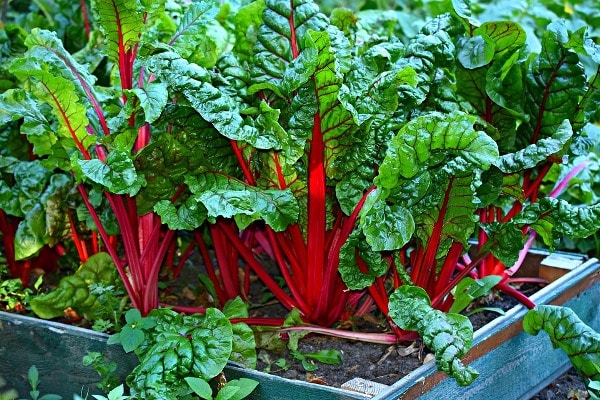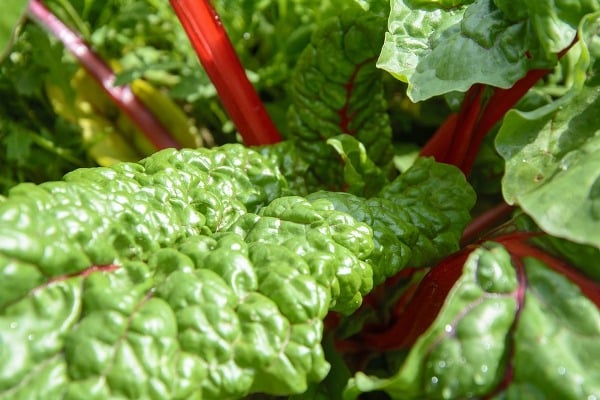An Introduction to Swiss Chard farming:
The following content is about Swiss Chard Farming, Planting, Groiwng Methods.
Swiss Chard is commonly known as spinach, beet, silver beet, Seakale beet, Chard, Leaf white or red in color and cm wide beet. Most people known this as spinach. It grows in cool season, stock resemble spinach, but are fleshy. It is a multi seeded fruit. Swiss Chard makes an attractive ornamental. Cultivation suggests Mediterranean area.Swiss Chards can be grown in Pots, Containers, even in Backyards.
Classification of Swiss Chard:
Its scientific name is Beta Vulgarisvarcicla and belongs to the family of “Chenopodiaceae“.
Major production areas of Swiss Chard:
South Africa and Italy: In South Africa, the crop is grown mainly in KwaZulu-Natal, but other provinces produce it as well. One of the major producing areas internationally is the country is Italy. It is also grown in large quantities in California.
Cultural Practices of Swiss Chard:

It is a biennial plant with large dark green leaves. The plant has a moderate deep root system and the roots are hard and woody. It has been selected for leaf production at the expense of root formation. The large, glossy crisp leaves can grow to 37 cm long and 25 cm Width.
Cultivation Practices of Swiss Chard Farming
Propagation method: The Swiss Chard plant propagates from seed.
Soil preparation in Swiss Chard farming: Generally, Swiss chord can grow in any soil provided it is well drained with an organic manure. Dressing of Dolomitic lime should be applied one month prior adding compost or manure. In order to speed the growth, incorporate the manure to top soil in the ratio 2:3:2 or 3:2:1 at a rate of 60 to 90 grams per Square Meter. In addition to this, up to 5 to 10 cm of height of organic matter should also be added to works as a catalyst. The optimum soil pH between 6 and 7 and soil temperature is 13 to 24°C.
Planting of Swiss Chard:Swiss Chard is generally sown from February to August. Plants may start inside in early April. But most of the gardeners plant seeds directly into the garden in the late April. Plant seeds 1/2 inch deep, 2 to 3 inches apart, with 18-24 inches between rows. Total plants sown 60000 to 80000 per Hectare.
Irrigation requirement for growing Swiss Chard: It requires frequent watering to help them to crop heavily as it has a moderate root system and it should not be allowed to suffer moisture stress. If rainfall is insufficient, irrigate with 1 to 1 ⅟2 inches of water per week in a single application. Frequent light water sprinklings encourage roots and making plants more susceptible to drought condition.
Temperature requirement for growing Swiss Chard: Swiss Chard is a cool season crop that grows best at temperatures ranging from 7°C to 24°C . This plant is half hardy, and can tolerate light frost conditions. Prolonged exposure to a temperature less than 5°C will induce seed production (bolting), usually in spring. Usually, in hot climatic conditions, leaves of Swiss Chard remain small and are of inferior quality.
Weed Control of Swiss Chard: Weeds can be controlled by chemical application or mechanical tasks. Chemical weed control can be achieved by applying registered chemicals. Mechanical cultivation should be shallow and not too close to the plant to prevent damaging the roots of the plant.
Pest Control in Swiss Chard farming: As most greens are fast growers, they don’t have many pests. Aphids are usually soft-bodied insects which can suck the leaves. These are also termed as plant lice.
They feed on plant sap and in this manner discharge sugary honeydew that can pull in ants and in addition bolster the development of a saprophytic organism.
There are a few types of aphids, all of which have a place with the bug family Aphididae, that are equipped for assaulting any kind of vegetation. Control aphids with a hard shower of water and also applications of hot pepper wax or insecticidal cleanser.
TYPES OF PEST EFFECTING SWISS CHARD FARMING

Leafminer: Larvae can produce discolored patches on leaves. As larvae feed on the mesophil tissue, creating extensive tunneling within the leaf the width of these tunnels increases as the larva grows, causing direct damaging by decreasing photosynthesis and causing pathogenic
- Control of Leafminer: It can be controlled by applying resisted chemicals. Affected leaves should be removed and destroyed early to prevent spreading.
Nematode (Eelworm): the crop shouldn’t be grown in fields with high infestations of nematodes.
- Control of Nematode (Eelworm): The soil should be fumigated before planting.
Cutworms: The cutworm cut the stem at, or just below the soil surface. Cutworms are highly capable of damaging several plants at a time and a large population of these can destroy an entire Swiss Chard stand. Since these can damage the plants in bulk when active, you can find recently thinned plants are especially sensitive to cutworms attack.
- Control of Cutworms: Control may be achieved chemically by applying registered chemicals. Precautions should be taken to control weeds that can act as hosts for these highly damaging cutworms, in the field and surrounding the field. The field should be plowed a minimum of two weeks prior to planting, in order to kill cutworms, hosts and food sources.
Attack of Caterpillars in Swiss Chard farming:
The name of the Caterpillar that can skeletonize older plants is saltmarsh caterpillars. They feed on seedlings and. Generally larvae feeds on older plants. If population is high, they can destroy an entire seedling stand.
- Control of Caterpillars: Registered chemicals may be applied to control caterpillars. The best way to prevent or control saltmarsh caterpillars is to stop their migration into the field. A 15 cm high aluminum foil strip or irrigation pipes that the larvae cannot crawl under will provide a suitable barrier to the field.
Aphids in Swiss Chard farming:
Aphids are green or black soft-bodied insects that feed on the underside of the leaves. Affected leaves become crinkled and curled.
- Control of Aphids: The control is simple and effective, Use insecticidal soaps, appropriate insecticides, or strong water stream to dislodge insects.
Loopers of Swiss Chard:
The growth of the plant is damaged by Loopers at all stages. The larvae feeds on the lower surface of the leaf masticating ragged holes in the leaf. Excessive feeding on seedlings can stunt growth or even kill the plants.
- Control of Loopers: Weeds on ditch banks and adjacent fields should be monitored for eggs and larvae during seeding. In order to kill the larvae, Fields need to be plowed immediately following harvest.
Various Disease in Swiss Chard farming:
Cercospora leaf spot: Infected plants develop light grey spots with a darker outline it affects the appearance of the leaves causing poor and the infection are more it results in dead leaves.
- Control of Cercospora leaf spot: Sanitation and destroying infected debris and practice crop rotation are the only solutions to prevent Cercospora leaf spot.
Leaf spot in Swiss Chard farming: The Symptoms initially appear as brown spots, turning grey with reddish purple borders at a later stage.
- Control of Leaf spot disease: Spray with a registered chemical. Curly top of Swiss Chard farming: The Symptoms of this disease are thickened and somewhat brittle leaves.
Control of Curly top:
Proper watering and good fertility will help in controlling this disease. Resistant varieties may be planted.
Read: Frequently Asked Questions About Plant Diseases.
Intercultural Practices in Swiss Chard farming:
- Mulching: It is a method of cultivation to Cover the soil with partially decomposed compost after the soil has warmed. The soil should be evenly moistened to prevent weeds to provide disease protection.
- Thinning: After seedlings have emerged, it is important to thin seedlings out to 10 cm apart.
Harvesting and Harvesting methods in Swiss Chard farming:
The maturity time for harvesting Swiss Chard is after two months when the length of the leaves has reached 10 to 12.5 cm long. The leaves are usually harvested by hand by cutting with a sharp knife about 5 cm above the ground. Outer leaves should be harvested first. In order to protect the younger leaves, utmost care should be taken. Harvesting can also be done by the plucking of the leaves of the plant or by twisting sideways. Harvesting is continued for several months for the same plant until the leaf spots become too rigorous or the plants run to seed. Over-harvesting at one picking is restricted to avoid weakening thus affecting the size of later picks, as well as a reduction in total yield.
Post-Harvest Handling of Swiss Chard
- Sorting and grading: Swiss Chard is trimmed, cleaned and tied into bunches in the field. The leaves must be free of insect injury, worms, mold, decay or another serious injury that affects its appearance.
- Packing and Storage: One or two dozen Swiss Chard is packed into wax cardboard boxes. Swiss Chard can be stored for 10 to 14 days if stored at 0 °C and 95 to 100 % relative humidity.
- Marketing: The plant cluster should retain a fresh appearance on the greengrocer’s shelves and have good eye appeal. Fiber content increases with age so that aged leaves should not be marketed.
Read: Polyhouse Vegetable Gardening.